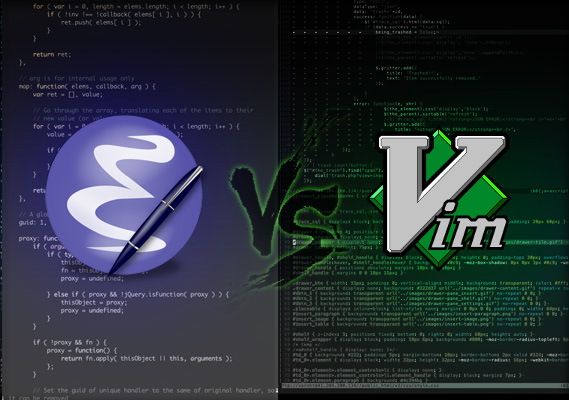
Home row keys are nice, but they often aren’t that much of a win because you have to switch modes. My personal opinion is that Emacs ultimately wins unless you have a typing disability (and even then you can configure Emacs to require only key sequences and not combinations like Ctrl+letter). Proponents of Emacs retort that Emacs has a lot of commands that are not frequently used, so don’t warrant a key binding, but are damn convenient when you need them. Proponents of vi(m) argue that you can do pretty much everything without leaving the home row, and that makes you more efficient when you need it most. If you get really into customization you might outgrow Spacemacs.This is an extremely hard topic.

That opinionated nature works for me, but it does add to the friction of customizing Emacs. My editor of choice is Spacemacs because it's pretty much what I want - Vim editing style, lots of built-in plugin goodness, customizable but opinionated. It's dialect of lisp is kinda funky, but it's more coherent than vimscript. It's about as close to using a lisp machine as most people ever get.
#Vi vs emacs plus
Plus things like Vimium (browser extension) let you use Vim keys to navigate the web.Įmacs, for its unrivaled customization possibilities and the experience of using a "living" program that you can modify while its running, from within itself. Plus it's installed by default in most places you'd be likely to ssh into, and if you enjoy the "language" of vim editing commands, there is probably a plugin to provide them in whatever IDE you're using. Vim, for its text objects and the feeling of using a language for editing and navigating text. Oh, and for Java, as much as that hurts, I'd stick with a "fat" IDE like Eclipse or some such - autocomplete-driven development is a thing, and unfortunately the best answer to Java's boilerplate that I know of.īoth Vim and Emacs contain very good ideas. Vimscript exists, but you're better off automating with shell scripts (which, in turn, you can run from within vim if needed, and even feed them vim buffer contents etc.).Īll that said, Clojure and Elixir, and to a lesser degree HTML / JS, suggest a dynamic, interactive, REPL-centric workflow, and IME, emacs lends itself better to that, especially because embedding a REPL into emacs works better than having a REPL running next to vim and trying to make them understand each other. ), with the editor being just one of many "modules". The best vim workflow, IMO, involves lots of short-lived vim sessions, and the disintegrated development environment is glued together at the OS level (shell / window manager / tmux /. Vim sucks at being that centerpiece it is excellent at being just the editor though. This way, you can maximally leverage emacs' scriptability - anything can be glued onto anything else, and bound to keys and commands. I'm less active with Java and Clojure these days, but I have used vim for both in the past.ĭepends on your needs, and how you want to set up your environment and workflows.Įmacs works best as the centerpiece of your disintegrated development environment a typical emacs-based workflow starts with firing up emacs, and ends with closing emacs, and everything in between is, ideally, controlled from within emacs.

Since you mentioned JavaScript and TypeScript: Many varieties of built-in in completion: This is step by step book (like a regular book) with explanations, not just a reference manual, this is actually included with vim when you install. Quick references and visual cheat sheets: Get interactive real-time help with vim on IRC: I am biased towards vim so here are some vim resources which I hope you will enjoy and find helpful.


 0 kommentar(er)
0 kommentar(er)
